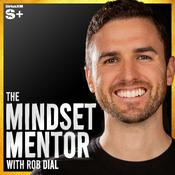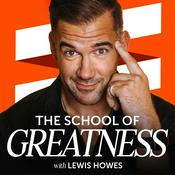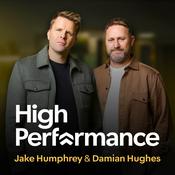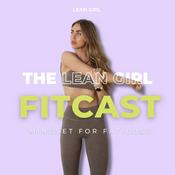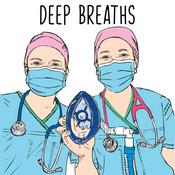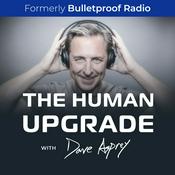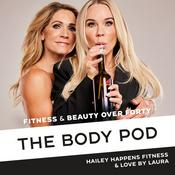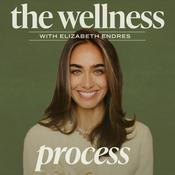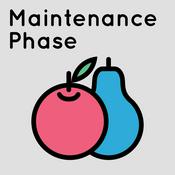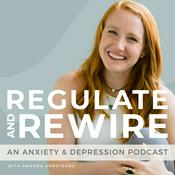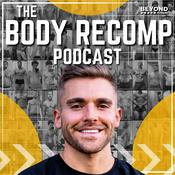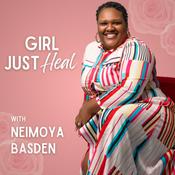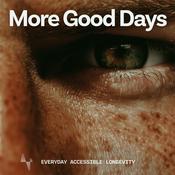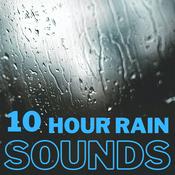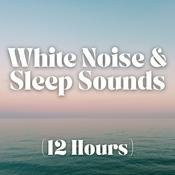69 episodes

Thank you
2025/12/12 | 2 mins.
Just a quick podcast note to say thank you for your support in 2025. This road cycling training podcast only really started 12 months ago. We've gone from 10's of downloads per episode to thousands. So now is the time for a reset and reresher, with the view to come back in 2026 with a fresh look/listen and an improved podcasting platform. About the RCA: https://roadcyclingacademy.com/

Group Rides: Boost, Burden, or Both for Your Cycling Potential?
2025/11/28 | 25 mins.
Summary The conversation delves into the significance of structured training in sports, particularly focusing on how managing intensity can lead to better performance outcomes. It highlights the importance of recovery and adaptations over time, while also addressing the complexities introduced by variability in training methods that comes with group riding. Takeaways Structured training is essential for performance success. Managing intensity is crucial for recovery and adaptations. Variability in training can complicate performance outcomes. A well-structured plan can lead to year-on-year improvements. Intensity management should be considered in all training cycles. Coaching plays a vital role in structuring training effectively. Recovery is as important as the training itself. Performance peaks can be achieved through careful planning. Uncontrolled rides introduce variability that can hinder progress. Understanding the science behind training can enhance coaching effectiveness. Monthly coaching RCA: https://roadcyclingacademy.com/one-to-one-coaching/ Transcript: Cam Nicholls (00:00.322) Welcome back to the RCA podcast where today I am joined by RCA coach Ben Treville, who's a science data geek or data nerd. I always forget which one it is. I think I say that every time, Who's actually in the middle of Australia at the moment, traveling with his partner in the Northern Territory. So thanks for joining us today, Ben. Alright, this podcast is brought to you by Starlink. Yeah, the internet connection is actually pretty good based off of the last podcast we did. So hopefully no issues in this one today. I wanted to talk about group rides and bunch rides because a lot of people that come to us, they're doing them and they want to incorporate them and we want them to keep doing them. We call it the not negotiable rides because we want people to continue doing the rides that they enjoy doing. you know, people also need to recognise that if you're overdoing them, which a lot of people are doing as well, you know, there's maybe some considerations you need to, you need to keep in mind. So in this chat today, I wanted to, you know, ask you with your, you know, partial science hat on, because I know there isn't a lot of science in this space specifically, this kind of indirect stuff that you've looked at, but also your anecdotal experiences as a coach, you know, working with amateurs and, and recreationalists that are doing know, group rides as part of their training, you know, how does it look? Is it a good thing? Is it a bad thing? What do we need to consider? So the first thing I'm going to ask you, because you know, a lot of people come to the RCA, they're making inquiries, I'm having conversations with them, and they're like, they're worried, do I have to let go of, you know, my group ride or my social ride or my, you know, we call it in noosa, the Tuesday world champs, you know, go smash fest with your mates. Do I have to get rid of that if I want to improve Ben? Ben Treble (01:53.484) My favorite statement. depends. It's a point. I feel like I wear two hats. My lab coat as a sports scientist, and then I have my coaching cap and my sports scientist lab coat says, you know, from a technical point of view, structured training wins out. It's really about managing control and intensity and the more, even from a science or a coaching point of view that we can. I can't. Ben Treble (02:22.402) control, manage, intensity throughout a week, a block, a macro cycle, like a year on year within the plan, the better we can manage the recovery and the better that we can peak for a certain performance and find year on year adaptations. Once we add in variability, and I'm going to... call on your bunch rides as highly variable uncontrolled rides, that's when things get a bit more complicated, right? And that's when you find that it's going to be difficult to plan a little bit, right? So that's the, we can dig a little bit more into the science side, because there is some science that's, would say, directly, or sorry, indirectly related to this topic. And that would be the science around what we call training intensity. distribution, which is fancy words for, you know, how much time do we spend in each zone when we train? So I think a lot of our athletes and listeners are used to thinking about, you know, in training peaks, we can see that how many hours in a week have we spent in each zone, week on week, and you can see the general structure. The two most common would be targeting for either a pyramidal structure, where the higher the zone you go, the less time you spend. And then you have probably what's got a bit more science behind it in terms of better outcomes, which would be polarized training or the 80-20 approach where you try to spend 20 % of your time at high intensity zones. And you spend 80 % of your time at the lower zones, so zone one and two. And you spend very little time in the middle in that zone three tempo space. Can I, before you continue, can I just play a little bit of devil's advocate here because you you talk about the unpredictable nature and not being able to control what's happening in a group ride or a bunch ride and I get that but isn't that what happens in the events that a lot of people are targeting like their Fondo events or maybe they even want to go to a crit race so isn't a group ride like the perfect conditioning tool for those? Cam Nicholls (04:40.64) No, it's unpredictable. Like you don't know what you're going to get. It's like for like. This is where I put my, my coach had on. said it in our last podcast, but, I am an advocate for bunch rides in, two scenarios. One is when you have a rider that's at risk of burnout from structured training, because I think we need, we need two things long-term. The most important thing that I think we could all agree on in, in cycle training is consistency over the long-term. Right? So how do we maintain consistency on the long term? The risk to achieving that is going to be burnout that stops you from training, taking a hiatus from training, which could be from work, family, travel, whatever it is. And then you have illness and injury. How do we reduce the risk of those things interrupting training? Ben Treble (05:43.636) And I believe that you need to keep training fun and interesting. And one of the most motivating things, but nothing is more motivating really than chasing your mates. many of your PBs can a set by on your Tuesday worlds versus on the indoor trainer? it's definitely, definitely Tuesday Worlds. But I do know, I mean, that other thing that's resonating going back to something you just said is burnout. I know if I do Tuesday Worlds and maybe if I did Saturday, the Saturday group ride as well, if I did that week after week after week, I'd be probably burnout within eight weeks, maybe even six. Yeah. Because there's too much for me. I know my body well now because I'm chasing wheels and you you're pushing yourself. You said, you know, you're getting PB's and stuff. You know, if you're your one minute power and your five minute power and, you know, 20 minute power, PBs or close to every other week, there comes a point where the body's like, I know, I've had enough of that. And all of a sudden you're not even anywhere near those PBs and you're all of a sudden you're on a plateau and that's demoralizing too. So while the bunch ride is fun, when you're plateauing and your mates are going faster than you now and you can't pull turns. maybe that affects the motivation. I there's certainly been a story of my past, not so much anymore because I'm a lot smarter, I listen to people like you now, but in the past, that's where I've been. Yeah, in science, we call it social facilitation. Right? know, when you put yourself in an environment where you're surrounded by people say pushing harder than you, the sciences has researched this topic a bit and it applied to both this research on both, like, sort of real world sport and eSports. So they've had the same outcomes indoors and outdoors on this and people were able to achieve more PBs within that social Ben Treble (07:45.496) group environment than outside of it. So there's still, think there's a lot of value to be had from Bunchrides, but it comes back to the individual and I think the timing of their program. So with my writers, yeah, with my writers, what we try to do is let's say you have a goal, a target event that's in four months time. Maybe within the base training, that's the time where we're going to make space for bunch rides. It might even be, or in the off season is a good time to make space for one or two depends on the individual bunch rides. But then as we get closer to the goal, we're probably going to reduce that to one bunch ride a week. And then when we'd say two months out, I'm probably going to say, look, let's keep this focused. Let's just do solo sessions for eight weeks. And at the end of the eight weeks after the target. We have a couple of weeks where we do two social rides a week to bring back some of that. The social aspect's really important, but also it's fun and motivating, I think, bunch rides for people. Okay. So what would you say then to somebody that, you know, has not negotiable to two group rides a week, but they want to improve. And I'm going to throw a curly one at you here as well. What if, what if their goal is actually to, to beat them like that? Cause we do have people that come to the RCA and like the number one goal is I want to beat my mates in the local group ride. Like that is, that is the goal, but they're also the irony of that is they're doing group rides all the time. Cam Nicholls (09:23.746) You know what I mean? So they're probably hit a plateau because they're just doing the same thing every single time and fatiguing themselves as well. I know, like I think sometimes people forget that the heart's also a muscle. And if you're like two or three times a week going to max with your heart rate, know, stretching your heart every single week, two or three times a week, even I feel like that in itself, like there comes a point in time where it's like, well, the heart doesn't tend to ache like your muscles do and your joints do. It tends to shut down the whole body when it's fatigued. So that's a pretty serious thing. Yeah, I would agree. think what needs to happen is people have to remember that the work you do in the training isn't where you get the gains. It happens afterwards in the recovery. And if you don't get enough recovery, doesn't matter. Often you see this with the people who don't follow structured training as you're talking about, they might come to the RCA all the time and say, well, you know, I'm plateauing, but I'm doing more hours and more intensive than I ever have before. Simple answer is you're not getting enough recovery and allowing the body to adapt to that training stress response. And because that's not happening, it doesn't matter how much more you push, if anything, all that's gonna do is take you from overreaching to over training and put you in a burnout mode. right, which is what we want to avoid. So sometimes you have to go slower to get faster. I would suggest to those people, pick one bunch ride a week, skip the other one. The other thing, if we think about the polarized training model, right, 80, 20, if you're too long rides of the week, a bunch rides that are high intensity. Ben Treble (11:13.582) There's a pretty good chance that you're not doing an 80 20. You're probably doing 80 20, but the 80 is hard and the 20s AC, which is, which is not what the science supports in terms of good outcomes in the longterm. So there's a balance to be had. And at some point you need to put the ego to the side. Now, if you really can't get rid of the two rides, the next step, the next best option would be. In one of those rides, I would say one of them go hell for leather, like have a free ride, bunch ride that lets you, you know, get your fix. But the second one go on it, but you have to learn to say, okay, I have to learn how to drop the wheel or go off the front and drop back at certain points, right? So that will let you control the intensity. I remember doing bunch rides and I've had friends who were training come to bunch rides and they might go off the front and do an effort. And then they'll come back and they might just sit on the back, right, to recover. And they'll actually use the bunch dynamics. They might talk to the bunch ahead of time. And I would say it's a courtesy to tell the bunch, guys, I'm actually doing a training ride. So they don't think you're just attacking the punch. So they know if you go off the front to do an effort, they're not going to chase you and kick things off. Or if they decide to kick things off, you might need to say, I've got to have the self-control to let it go and potentially get dropped on this bunch ride. Hmm. Knowing that that will help me drop them next month when I do my free ride bunch ride. Hmm. And what sort of stuff are you, you know, and this is a pretty broad question because everyone's different and everyone comes in at different levels. But let's just say as a general blanket and maybe I paint a bit of a picture here because a lot of people that come in, you know, I'll ask them and even if you look at and you go as a coach, I know you guys go a level above this because when somebody joins us, I'll incorporate, you know, Cam Nicholls (13:19.37) import three months of historical data. And if I've been doing a lot of group rides, you can see what zones that they've really been hitting and focusing on. And quite often, because there is a lot of intensity in there, there's kind of like this gray area in the middle around sort of threshold, sweet spot. And in particular, I always ask people, do you ever do exclusive zone two? They've heard about zone two and they think they do it. But like I'm talking about, no, no, you just actually go out ride for two or three hours and you just do zone two and you don't touch threshold. You really wanna focus on just nice, consistent, constant pressure at a zone two level. wow, I've never actually done that before. So there's often like looking at the data, lot of low hanging fruit items that you can focus on. So if somebody's coming to you and they're doing a lot of group rides and say their goal is to improve in the group rides, but you've now convinced them, right, we're just gonna do one a week. What are you gonna put in sort of surrounding that, you know, in terms of training for the rest of the week? I mean, how would I plan around a single bunch ride in a week? Exactly. over a time as well, over a progressed 12 week period, how would you kind of start? let's assume that at the end of the 12 weeks, they want to now, they've been getting dropped off the back and they can't pull turns, but after 12 weeks, they want to be getting to the front and pulling turns again and feeling really strong again in their group rides and impressing their mates and doing all the things that we love to do in the group rides. Ben Treble (14:59.438) I'd spend, I'd probably spend the first block weaning them off bunch rides, to be honest. So I would let them, at least the first week, I would let them have status quo, put in a couple other structured rides and see how well they can actually hit the target intensities of a recovery ride. I often find with new riders, when I give them a recovery ride, they turn it into something else. And the TSS looks way higher than it needs to be. And they don't realize that a recovery ride is very low intensity. It's like if you were running and I said, go for a walk, that's like the equivalent of, you know, think of what is a walking pace on the bike. You might think to yourself, why would I bother? That's the right pace for your recovery ride. The point that you think, well, how am I bothering with this? That's the good intensity for recovery ride. so that's where I would start. So first block, wean them off. In the middle, I would try and even get them off bunch rides completely for at least one block. I think most people are willing to do one block with no bunch rides, just do some focused efforts. In the final block, bring them back into the bunch rides once a week, manage it. And then towards the very end of a 12 week program, give them free rein on a bunch ride and see what they can do. Okay, and what sort of training would you be prescribing if they're not doing bunch rides? Well, what are they doing then? Are they just doing recovery rides? No, no, it's going to be a mixture. ideally on the weekend, you're doing, let's say one or two long rides, but let's say you get someone who has six to eight hours a week, and we're going to target for say four rides a week. We're going to do one long one on a weekend around two and a half, three and a half hours. This will be predominantly zone two with some high talk efforts. So that's a low cadence intervals in the sort of zone three range. Ben Treble (17:00.846) Then mid-week, you probably have two full days off at least, and then split up to structured intensity days, which will most likely be a mixture of either threshold, which could be over unders, for example, or might be if we want to work on via 2 max, it could be 30 15s, for example. And then we're going to have a zone two ride and potentially a zone one recovery ride. Yep, it's interesting. And just what you've said there, I mean, there's so many people out there that don't spend that much time on structured interval training. And, you know, they wonder why they struggle with recovering from, you know, doing a turn in the local bunch ride. You know, they can't go again, or, you know, they're struggling to, you know, get up a climb in their local bunch ride. And it's like, well, when you actually step away from that environment, and you target you know, specific adaptations. So, you you're over-unders, that's gonna help you with your climbing. You've probably never done this before, because you're so focused on group rides and sporadic riding, all of a sudden you're targeting something that's gonna give you a specific outcome. The same as the, you know, VO2 max, you know, interval sessions, like 30, 15s, or whatever it is. That's gonna really help you with the ability to go really hard, come back into the bunch and recover. Go really hard, come back into the bunch and recover. And it's funny when people actually take, like what you've just described. we're gonna take a step back, we're gonna just move away from that environment for a little bit, and we're gonna do some specific things that are gonna have specific outcomes, then when you get back into the group ride, you've done all these things you've never done before that are targeted for specific adaptations. it's amazing, you know, that the feedback you hear from recreationals and amateurs that actually embrace what you've just described there, Ben, and go back into that environment like, oh, okay, I get it now. If I want to be good at this, I can't just do this all the time. Having said that, I do know there are the unique individuals out there that can just do bunch rides all the time and be good at them. We've got one locally here we call the robot. We call him the robot because he's like a robot. He's genetically a little bit different. So it can be, but more often than not, and I'm certainly one of these people, if I don't go do my... Cam Nicholls (19:17.966) some targeted stuff surrounding the group rides, do my long rides in zone two, do some structured threshold, hill repeats, whatever it might be. I won't perform as well in the group ride. that's a brief overview of how you would sort of, I guess, target or improve group rides. You don't have direct research there, but you've got some indirect stuff. What does that stuff say? Is there any enlightening things that have come out of that research? Any Ben Treble (19:56.64) Yeah, I mean, the research that comes to mind is on the topic of, we said it earlier in the podcast, training intensity distributions. Steven Seiler is probably one of the more prolific researchers out there on this topic. And he had a predominant focus on the 80-20 model. I think some would even say that he's sort of not necessarily come up with that model, but been a big driver in the, you know, the endurance sports space. trying to get people to adopt this intensity distribution model and the benefits of it. So I think it's pretty quick. Like if we, when we look at new athletes that come in, that come from this bunch riding mentality, haven't done structured training, if you look at their training history and you look at, assuming their threshold is set right, when you look at how the intensity distribution works in their history. It's very rarely is it ever 80 20. And even often it's not really a very good pyramidal structure either, which is often just, yeah, sorry. Pyramidal would be you spend the most amount of time in the lower zones. So the bottom of the pyramid is your like zone one, then you have zone two, which would be like your typical endurance zone. And then as you go up the pyramid, the higher intensities, they're the ones you spend the least amount of time. Yeah, so the main difference between pyramidal and polarized for those who may not be aware is you're spending just a little bit more time in zone two in the pyramidal, which is in essentially if you're not, most people aren't using a three zone model, which is what pyramidal and polarized use, which is the scientific zone model, which only has three zones, but zone two is more sort of like that sort of upper end aerobic sort of sweet spot. tempo area, which really isn't prescribed so much in polarised, but it is in a pyramidal format. I don't know about you, Ben, but I know a lot of the coaches at the RCA, depends on the athlete as well, probably using more of a pyramidal approach than a polarised. still, if you're doing bunch rides, it's neither of those two things. guess that's the point you're trying to make. Ben Treble (22:21.9) Yeah, there's quite a few in the research world. have what's called systematic reviews, which they systematically go out into the journal databases, pull all the research on certain topics. They try and pull all the data from each paper together in a way that lets them analyze a larger data set to see if there's any outcomes or insights. And there's quite a few, there's probably three, if not now, maybe even five. I think there was another one that just came out recently systematic reviews on training intensity distribution. People are often trying to compare pyramidal to polarized. And then they often have like threshold and some other, you know, categorizations of training intensity models. And there are certain papers that show pyramidal is better and certain that show polarized is better. There's probably more papers that support polarized over pyramidal. My hypothesis on this is that if you have less hours and you're say less trained, like an amateur recreation, you're better off with pyramidal. And the more well-trained you are, the more you need to switch into a polarized model. Hmm. Typically because the more well-trained you are the more volume you're doing and the more volume you do at a certain point You're limited by your energy, but both Cam Nicholls (23:46.798) Both these models are proven models and both of them don't align to the Buntride model, do they? No. So that's my point. come back to my first thing I said, which was that the variability that you get out of these bunch rides is uncontrolled and it's not predictable. So it's very hard to plan and do structured training and have really good outcomes. If you just do these bunch rides. The key thing here is that there's a time and place for bunch rides. The science side says solo structured training is always better, but in the long run, we know that you need to be consistent and stay motivated. So If you're in the off season or you're a bit further away from doing an event you're targeting, that's the time and place to fit in those bunch rides and get your fix. And then the closer you are to your goal, you probably need to make more space for the structured training and it's more valuable and important. Good. All right. Well, thanks for your time, Ben. If you're out there listening and you're like, well, you know, I wouldn't mind incorporating some structured training into my bunch riding schedule. And I want some support. want some guided support. know Ben's got some capacity at the moment. So if you want to work with Ben directly, you can head to the RCA website. You'll see monthly coaching there. That's our most popular option. There's also a weekly option if you want something a little bit more intimate. And there you can work one-on-one with Ben or any of our coaches to, I guess, put a plan together that works around your schedule, looks at the bunch rides that you wanna target, you wanna improve. And we can ensure that you're getting the right training to get you off the plateau because that's really a hidden motivator for a lot of road cyclists that come to us is, they wanna be better in the group rides, they wanna be better in the bunch rides. Cam Nicholls (25:36.706) but they've hit a plateau and they're not sure what to do about it. Well, that's where obviously we can support you. So head to the Road Cycling Academy website, www.roadcyclingacademy.com and you'll see a link in the menu description called hire a coach and that's where you can get started. We'll catch you in the next podcast.

Boost V02 Max with Decreasing Interval Training (*Research Paper)
2025/11/28 | 23 mins.
In this RCA Podcast episode, Cam Nicholls is joined by RCA coach and science expert Ben Treble, who dials in from the middle of outback Australia to unpack a brutal but fascinating VO2 max session: high-intensity decreasing interval training. This workout comes from a 2020 research paper and flips the classic VO2 script — starting with longer efforts and progressively shortening the work intervals while also reducing the "recovery" time. The goal? 👉 Spend more time above 90% VO2 max for better aerobic adaptations, without endlessly grinding through 4–5 minute repeats. Research paper here: https://pubmed.ncbi.nlm.nih.gov/32780251/ Cam shares his first-hand experience trying the session (including why the 2-minute rep hurt the most), and Ben breaks down: How the workout is structured and what intensities to target Why some athletes respond really well — and others… not so much Where this fits into a VO2 max "toolkit" alongside 30/15s and classic intervals How to think about specificity, timing in the season, and variety in your training Whether using ERG mode on the trainer is "cheating" (hint: it isn't) If you'd like this workout built properly into your own training, check out the RCA 12-Week Custom Plan, where you work 1:1 with an RCA coach to tailor sessions to your goals, schedule, and current fitness. Takeaways A really important part of all training is variation. People do respond differently to different workouts. You can easily keep it interesting. I call it like a VO2 max toolkit. You've got the classic four or five minute intervals. You could use these decreasing working time intervals. Variation is key for effective training. Different workouts yield different responses. VO2 max workouts can be diverse and engaging. Incorporating variety enhances performance. RCA 12 Week Plan: https://roadcyclingacademy.com/cycling-plan-custom/ Transcript: Cam Nicholls (00:00.302) So welcome back to the RCA podcast where today I'm joined by one of the RCA coaches, Ben Treble, a science expert who's been with us many times before and is currently out on the road somewhere in the middle of Australia on some huge trip. Where are you Ben right now? It looks like you're in the middle of the country somewhere. Yeah, thanks Cam. I'm currently in the Northern Territory on one of the bigger cattle stations called Newcastle Waters. I'm just here overnight at the moment and then we'll keep heading north this afternoon towards Catherine. Yeah, nice. That room you're in looks like there might have been a few backpack backers murdered in that in the past. Looks nice and dodgy. Yeah, I won't go into it, but we're going to go through a town called Laramma that has an ongoing murder investigation. Oh, there you go. Yeah, it's a bit dodgy out that way, but it looks like you're having a good time watching your social media. So yeah, keep it up. Enjoy it. Today I wanted to talk about a science-based workout that's been going through the RCA coaching, you know, discussions recently. It was put up in our WhatsApp chat and we've created our own workout within Training Peaks that we've started to prescribe members to give a go. And I gave it a go myself this week. Cam Nicholls (01:22.234) And I've sent you the paper. I actually haven't read the paper yet. So I'm hoping you can give us a bit of background on this science-backed workout that's, guess, relatively new and there's a bit more work that needs to be done in the space. But I'll give you my thoughts on the workout. But before I do that, can you tell us, you know, what is this workout and what exactly are we looking at in terms of, you know, outcomes from a fitness adaptation perspective. There was a paper by S. Lazar and Co. It was actually published in 2020. So I wouldn't say it's that new, but possibly the adoption of it is new. So they call it high intensity decreasing interval training, which is fancy word for doing high intensity intervals. And as you progress through the intervals in the workout, they're decreasing the work duration of each interval. So the quick example. Say the first interval, you do it around three minutes. Then you have two minutes rest. Then you do a two minute interval, where that's the work duration. And then you have, say, around 80 seconds or 1 and 1.5 minutes rest. Then you do a one minute work interval, 40 seconds rest, 40 seconds down to 30 rest. And then it's 30 second work intervals until fatigue. What range are we working at? we working at VO2 max? Are we working threshold? What are we doing? Ben Treble (02:54.38) It's via to max. So the primary goal of this paper, and I guess this workout, it was to compare different interval workout types. So they had short, like classic fear to workouts. And then they had longer intervals, a reminder for the audience that anything above your threshold essentially just requires duration, but you can reach your fear to max at any intensity above threshold. it just takes longer. So if you're say, if you're 105 % above threshold, you can still reach via two max, but it might take you 25 minutes to get there. Right. And so the crux of the paper and a lot of these via two max workouts around what's the best workout to improve via two max, that's really where they come from is how do we make these interval workouts more effective? And it's based on That's a big assumption, but it's pretty validated that the more time you spend above 90 % VO2 max, the better the increase in VO2 max. So the better the adaptation outcome. And so they're trying to design and get creative around these interval workouts. What is the best interval workout structure that lets you spend more time above that 90 % VO2 max for less effort. Okay. And looking at the paper and the participants and the results, was there anything worthy to note? Yeah, yeah, it's keep in mind, it's a single paper is a pretty small sample size. So they had 12 cyclists, middle age, so around their 40s, they're moderately to well trained. So they had around a via two maxes of around 55 give or take. So that's just the population group of this study. So it's important to keep that in mind. And what they found was Ben Treble (05:01.358) that you spent significantly more time in this high intensity decreasing interval type of workout compared to small or long intervals for VO2 max. What's important though, I think in this paper is that there's a high amount of standard deviation. So for example, one of the measurements was they spent around 312 seconds. above that 90 % VO2 max, but your standard deviation was 207 seconds. So you had some responders in this sample group who might only have spent essentially what is an insignificant from a scientific standpoint, amount of time different to the other workout types. So some people had no more benefit that was measurable by doing this versus short intervals. But some people had very large responses to it compared to the short and long intervals. And this is a trend in most of these, you you and I have talked about 3015 as a really good VO2 workout before from Ben Ronestadt. And even with within that, and he's done multiple papers on it, so then the research is a bit more conclusive, I would say that it's a very good recommendation. This paper is good. And I think it's a really nice indicator to say potentially, this has a lot of good potential. But it's not a guarantee that it would work for you. Okay, so going to the workout structure and how to do it because the thing I liked about it is I'd actually never done it before. I've done a lot of VO2 max training sessions, know, 30-15s, which we talked about, I started to incorporate that a fair bit after we sort of made some content on it. And, you know, I found that to be quite effective. I hadn't done a lot of Cam Nicholls (07:00.622) 30, 15s in the past, so it was new. You get a bit of a dopamine kick out of it when you've been riding for a long period of time and it's a new workout to try. And you see a result as well, so that was good. In the past, I've done a lot of more sustained VO2 style sessions, like sustained three to four minute efforts, maybe if I'm out on the road, five minutes. But never this decreasing style session where you you start off and this is what I want to validate with you because I think maybe what I've done was, you know, Ryan, our head coach dropped it in my training peaks and he said, look, this is where you start. Because obviously there's a starting point for these workouts and you can progress from there. But it sounds like what this paper is indicating is a little bit different to what I did, which was, I guess, dipping my toe in the water with this workout where I did a warmup. I then did some activation efforts. I then got into the first set. and the first set was three minutes on, and this was, know, at, you know, VO two high VO two, two minutes, I wouldn't say recovery. It was probably, top end zone too. so for me, that was about my, was, try and operate just over 400 Watts for the three minutes. And then I came back down to two 50 ish. for two minutes. And then I did two minutes back around 400 or just over 400. And then I came back to 80 seconds at 250-ish. And then I did a minute at around, you know, just over 400. And then I think it was 40 seconds maybe, or 45 seconds, I can't recall exactly, back at 250. And then I did the 30 seconds. And then I went back down to 250 and then I did a recovery at like 150 Watts or something like that for seven minutes. And then I did a second set of that. But it sounds like in this paper, you continue on with the 30 seconds is what you said until you reach a fatigue state. Whereas I didn't do that. And I'm assuming, you know, the reason behind that is Ryan's like, well, you've never done this before. Cam Nicholls (09:26.114) And I also indicated that I've been training for a triathlon and I hadn't done much VO2 work recently. So was a little bit, know, unconditioned for VO2. So he was aware of that. So what he's prescribed to me as a starting point sounds like it's not exactly what's put in the paper. Is that correct? Yeah, you're on the money. It's probably important when we talk about the intensity in the paper, essentially they talk about the on and the off phase of the work and the rest components of those intervals. And they primarily did this using their VIA2max measurements, but they made some correlations to critical power, which they measured in the paper as well. And so the relationship that they made was that the on phase was around 117 % of critical power and the off was around 83 % of critical power. So you're pretty spot on with what Ryan had you at. So, you know, that hundred and around the 115, 120 % of threshold was the hard. So like a via two max effort, it's pretty common. And then the off phase, a high zone too, I would say it's even maybe like get reaching into zone three at 83 % of critical power for the off. So it's not an easy off. No, it's quite, it's quite key because when I first saw this and you sent it to me, my immediate thought was the recovery periods are way too long. Your heart rate will drop too much and the VO2 response will drop in those large rest periods too much. But then when I saw that the off phase was actually quite hard still at 83 % of threshold, That's what helps keep the heart rate high and it's keeping that VO2 response high through the rest period. And then obviously, as you progress through those, you know, decreasing intervals, the work period and the rest period is decreasing at the same time. And when the work and rest is both decreasing, it's just maintaining that high VO2 max percentage towards the end of the workout. Exactly as you said, yeah, the goal is, and what they did in the study is that once you got to the 30 second Ben Treble (11:41.824) interval mark, you had to repeat those until failure. So that's probably the key difference between what you did and what the paper did. But I think for our listeners, you know, you're still going to get a really good workout. If you just get to the first 30 second interval without continuing to failure, right? At the end of the day with all hit workouts, time is, know, and availability is one of the challenges for all athletes. So if you only have an hour to train and that's what you can fit in, I think it's a really good idea to give it a crack. So in the paper then, once they went to failure on the 30 seconds, did they then have a recovery period and do another set? Or is just one sequence? Ben Treble (12:33.568) No, no. So they would do, for example, they would do this when they once they got to the decreased 30 seconds, there was 20 seconds rest. And then they would do another 30 seconds. And if they can't hold the power, that's when they would kill the session. But what I'm saying is that, so once they got to that sort of failure point in those 30 second intervals, would they have a recovery period? Like I did, I had a seven minute recovery period and then I did another set. in the paper it sounds like that wasn't the case. Single set, it's interesting. So what Ryan has had prescribed me is, I guess iteration of the paper. single sets. Cam Nicholls (13:18.862) without the 30 second to failure and doing another set. And what he said he's done for a form of progression is at another set, like a third set. And he finds that that's actually really difficult. And for me, even though I haven't done a of VO2 max work, I'm relatively conditioned to interval training and I've done it for 15 years and VO2 max. And I just found those two sets really actually quite a lot of hard work to do two of those sets, know, stopping at the 30 seconds and the the hardest repetition was actually the two minute repetition, not the three minute at the start or not the 30 second at the end, because I feel like that two minute recovery that you get after the three minutes at VO2 or just a bit over. You know, at what did you say, 83 % of critical power. Yeah, which for me, 250 watts is borderline zone three in our seven zone, you power model. I did feel like I didn't get enough recovery. So when you start the, you know, the two minutes back at over 400 watts and you're not fully recovered, that two minutes goes for a very long time. Yeah, it's a it's a pretty brutal session. I mean, I'm not surprised that the first one felt okay, especially if you've done a good warm up because your via to max is still going to be ramping up. And as it's ramping up, you're going to lean on and your respiratory rate hasn't fully increased yet. Right. So it's, you can even see it in the paper as you look at the the oxygen consumption line through this decreasing intervals that in the first one, it's increasing and it it peaks at the end of that three minutes, right? And then you get the recovery. And when you start that two minute effort, you're already at like peak respiratory rate and your oxygen consumption is already very high. to me, that kind of makes a bit of sense that it feels pretty hard. All the first interval felt easier than the next one. Cam Nicholls (15:28.91) in next one. Yeah, it was actually the second repetition in the second interval. So that two minute in the second set, that was by far the most challenging because I feel like, you know, one minutes, you you can get through one minute mentally pretty easily. 30 seconds you can get through, even though it's still hurting. But yeah, two minutes can be a long time on an indoor trainer at VO2 max when you're not fully recovered. So yeah, it was. It was an interesting workout. I think it's, you know, going back to, you know, what you're saying about the paper is it didn't, you know, even though it's a small sample size and it's, you know, one paper, you know, it's, it's, you know, probably suggesting that it's not going to work for everyone, but it is going to work for, for certain people. And, you know, if you're doing VO2 max training and you're a bit sick and tired of doing your standard go-to if you've done 30-15s for a long period of time or if you've done sustained efforts. From a variability perspective, there's probably a lot of value in it just in that. What would you say to that, Yeah, I think there's a lot of value in it. You know, I had a couple key takeaways around when I read this one was that, you know, a really important part of all training is variation. And I think it's important even when we read papers, it's to remember, okay, people do respond differently to different workouts. But when we need variation, you know, you can do the 30-15s. And if you're doing a VO2 max block, You can easily keep it interesting. You can have this, I call it like a VO2 max toolkit of different VO2 max workouts where you've got, for example, the 30-15s, you've got the classic four or five minute intervals. You could use these decreasing working time intervals. And you can use one that we've done before or talked about a little bit where you have like a classic, say, four or five minute interval where the first two minutes is. Ben Treble (17:28.27) you know, around 130 % of threshold and then you go into the 120 % threshold. So you start hard and then finish not quite so hard. So I think it's nice in this sense. Like I saw it, I read about it. I think it has a lot of good potential. And based on the paper, like I will be adding it to my Fiat 2 Max toolkit. And I think everybody should consider giving it a crack. The other bit that I think is important to remember is specificity in training. So, you know, and the timing of it. So depending on the time in the season, if it's just like a capacity block and you want to build via two maxes capacity, you could throw it into the mix along with some other workouts. But as you get more specific, if you're someone who does a road race that has lots of mixed intensities, I would say there's probably some benefits of doing this decreasing interval version because you're teaching the body to work at via two max at different interval durations, right? Like two minutes, 30 seconds, two minutes, like different versions. Whereas if you're to do, something where you know you're going to do five minute efforts a lot or 10 minute efforts, then you probably want to grow yourself into those via 2Max efforts more than these. Yep. No, good point. One, one final thing that I'll add from my experiences with the workout and I'm keen to get your perspectives as a coach. Uh, so the first set, I just struggled a little bit, uh, from a mental perspective. Like I was just couldn't get the power consistent. was kind of, I was a little bit above 400, but then I'll drop down to like 380 and 370 and then I'll get back to 420. And I was all over the place and I just, I was losing a bit of concentration. think my motivation levels are a bit low as well after training for a triathlon, doing something that I didn't actually want to do. But, you know, what I did after that first set is I just locked it in erg mode. going, you know what? Like I'm not having a good time on the trainer, you know, managing this with my own, you know, my own mental capabilities right now. And I just... Cam Nicholls (19:45.646) gave control of the trainer and said, you know, I'm just going to do the rest of the new, but I did the second set where it was just like bang on 400 Watts and then bang on 250 Watts and bang on 400 Watts bang on 250 Watts and I didn't have to worry about it. So is that kind of mid workout strategy based off of my headspace at the time? Like what do you say to that? I think he did well to adapt to, you know, you had the self awareness to know, okay, this isn't going to work today, right? To do the workout off erg mode. And I think it's a exactly why we have erg mode in my view. I'm not anti erg mode. I think if you can do workouts without it, that's really good. The scientific side of me says I always like to do erg mode because then I know the workouts exactly the same. And when I compare week one to week two, I can really look at acute heart rate response and know that it's a pretty good response. The only thing I would add to that was, yeah, I mean, it's a really good idea if you're struggling for motivation when you get on the bike, because it's pretty common, especially with an indoor session. And it's winter for our Europeans and North Americans. And I know a few of my athletes have gone through this in the last couple of weeks. I find that music as well is a mood lifter. And for me, I remember when I had to do some really hard sessions on the trainer, like flicking it to erg mode and putting on those, whatever the tunes are that get you going. And then you just have to push the power. Like if that gets you through the session, I'm all for it. Good. All right. I'm glad I didn't do the wrong thing because I'm going to be making a YouTube video about this workout and I can already see the people in the comments having a crack at me for, doing it in, in erg mode. But yeah, I certainly feel there's a time and a place for it. And, and to, be, to be brutally honest, like I I'm probably more of an erg mode fan when it comes to the trainer than anything else, because it's just, it's convenience of being able to just sort of switch off a little bit from that. Cam Nicholls (21:48.59) concentrating and just letting the trainer do the work. I'm glad in this instance I get a coach's tick of approval. Thanks, Ben. I feel better about it now. No worries, Cam. Cool, well, if you're interested in learning more about this workout, we'll drop the research paper in the description. We don't currently have this workout in our off-the-shelf plans, but if you're keen to incorporate it and place it into an overall plan, check out the RCA's 12-week custom plan. You go to our website, go to the drop-down menu, you'll see the 12-week custom plan in there. You can work one-on-one with the coach. How that works is you have an upfront call. with an RCA coach to get an understanding of who you are, what your logistics are, what your riding preferences are, what you're trying to achieve. And then after that call, the coach basically puts together a 12 week custom plan and they can incorporate this workout if you wanna give it a try. In Training Peaks, so it's all loaded in there and Training Peaks connects through to all the commonly used head units such as Wahoos, WIFT. and of course training apps such as Training Peaks Virtual and Swift. So if you can give that a go, check out the RCA website. And Ben, thanks for your time. Good luck in the middle of Australia and we'll catch you in the next podcast.

Life as a Directeur Sportif (Matt Wilson on Orica GreenEDGE *2014-2020)
2025/11/13 | 33 mins.
Summary The conversation delves into the intricate logistics involved in organising a cycling race, particularly a Grand Tour, highlighting the challenges of managing teams and maintaining motivation in a high-performance environment. Through the lense of a Sports Director / Directeur Sportif. In this case, Matt Wilson, who was the Directeur Sportif for Orica Green Edge from 2013/14 - 2020. Takeaways Cycling races involve complex logistics with multiple vehicles and staff. Managing a cycling team requires keeping everyone motivated and happy. Creating a cohesive vision among diverse teams is crucial for success. The environment in cycling is high-pressure and requires effective management. Logistics in cycling are more complicated than in many other sports. Team dynamics play a significant role in achieving performance goals. Each race involves staying in different hotels every night. The number of people involved in a cycling race is substantial. Maintaining a positive atmosphere is essential for team performance. The challenges of cycling logistics are often underestimated. Transcript: Cam Nicholls (00:00.056) Welcome back to the RCA podcast where today I am joined by Matt Wilson and Matt's a neighbour of mine and he's also co-founded the Pro Velo Super League which we just talked about in the previous podcast. If you want to hear about that, go back and listen to the last podcast. But Matt, which we didn't talk about in the last podcast, also has quite an illustrious, is that the word, cycling career and spent a lot of time as a pro and also as a DS, a director sportif. And as I'm... just starting to get a flavor for what's involved. Not that I'm doing the DS role myself, that's Ryan Thomas, the head coach at the RCA, but I'm hearing about all the things he's doing. I'm like, wow, there's a lot of work here. And Matt, you spent eight years as one. thought, why don't we just spend half an hour here or 20 minutes or half an hour. I'm just gonna take chatting about what does a DS actually do? Because you kind of watch unchained documentary, which a lot of people would have watched, and you see this guy in the car yelling at the riders. it's like, is... Is that all they do? Just tell them to ride faster. Which is clearly not the case, but I think a lot of people obviously don't have an idea and I'm curious myself to learn. But before we go into that, I do need to ask you a pretty hard hitting question here. And that is, you rode pro for a number of years. You won the Sun Tour, Australian road champion, you rode tour to France, know, top 10 at the TDU. Why do you never come to the famous Noosa Tuesday World Champs? Never seen you there. What's going on? I have done it just before your time. really? Sprint for the blue letterbox? Okay. Exactly. Yeah. Now it's the red letter box. Someone painted it a different color and you can't, it can't be changed on Strava. It's still the blue letter box. Matt Wilson (01:40.194) Yeah, right. No, no, I did it back in the day. But yeah, no, not in recent history. You just don't ride anymore, is you? I do but I'm just so busy and I sort of you know if I do ride it's 45 minutes down to Parisian and I turn around and I come back and that's it that's that that's my riding couple days a week. Not even. Two hours a week would be a really good week. So you're doing two, three hours a week? Oh. Not even? Cam Nicholls (02:08.032) Right. Do you miss it? Yeah, I do. I don't miss the professional hours and training as a job, but I miss being fit. I miss going out with the guys. I guess that single-minded focus of just all I have to worry about today is just a six hour ride and getting home smashed and just sitting in the couch and recovering and that kind of simple life. is still attractive now and you're working sort of 10, 12 hours a day and got three kids and juggling, you know, regular life stuff that people have to have to deal with. But, know, as an athlete, you don't. Yeah, okay. So you don't have any appetite to get fit enough to come do the World Champs on a Tuesday. It'd be great to see you there. Anyway, sorry. This podcast isn't about the World Champs, but it's become quite a well-known ride because I've made a lot of content on it and there's another content creator who's done a bit of content on it and yeah, gets quite a few people there now. They broke the record the other day actually. Really? Well, there was... How many guys to get? Cam Nicholls (03:14.254) There was one guy that rocked up on a TT bike with his sperm helmet and his disc wheel and he was the one that basically did it. But it's funny, like the day that happened, the whole bunch was with him. About 30 minutes prior, a whole bunch of professional triathletes went out and did the same course with six TT bikes and they went and smashed it as well. So it got smashed twice. It had been a record for like seven years and it got beaten twice in one day. yeah. Alright. Cam Nicholls (03:43.182) Your role as a DS, you were with Orica and you're a DS there from 2014 was it? To 2020-ish? Yes. Yeah. If my numbers are right. Yeah. I signed a contract when Green Edge Cycling started, Orica Green Edge, was one year sports director, sorry, one year rider, two years sports director. So I did the first year of the team, which I think was 2013, And stepped into the car. Actually at the end of 2013, I switched. So my last race was Hamburg Classic. And then the next race was the Vuelta and I was a director at the Vuelta. Yeah, okay. So as a pro rider, how long were you a pro rider for exactly? 10 or 11 years. 10 or 11 years. So you obviously exposed to the direct to sportive role during that time, you know, quite intimately. What was it about being a rider and seeing that role that made it appealing for you when you retired from being a professional cyclist? Matt Wilson (04:46.54) It was never appealing for the vast majority of my career. The vast majority of my career. Yeah. Look, last, probably the last three or four years of my career, I started to take on a more leadership role on the road and started to become that road captain. And as that started to form, I started to feel like that might be somewhere that I'm going to move into. I didn't have a clear idea of what I wanted to do when I retired around that time. Ruh! Something changed though along the way, obviously. Matt Wilson (05:15.446) So as that started to become more obvious that that was where I was going to go. And I actually, the year I signed with Orica Green Edge, I had offers from other teams as sports director as well. So that was clearly where people saw me going. And that was where I saw myself going and just sort of grew into it. at that time, believed that sitting in the car, like you said, yelling on the radio and doing the team meetings in the bus was all you saw. You you thought that was the whole job, but essentially that's the tip of the iceberg sticking out the water, you know, and when you go underneath the water, the mountain of ice is really below and that's what all the work is. What you see at the top there, that's the fun part. Right. Getting in the car. So even like the layman sitting over here watching Unchained and seeing the DS in the bus talking about the race before the race happens and then yelling in the team car, that's almost what you only saw as well as or thought as a rider as well. Sure. Absolutely. Absolutely. You know, especially as an athlete, you've got tunnel vision. You see what you see in the world that you have and you think that's the world. And then when you get, when you retire, the blink has come off and you see what the real world really is. It makes a lot of sense. So maybe you could tell me, I don't know, you know, we could probably talk for hours, but is there like five, 10, know, even 15, whatever it is, like critical things you do as a DS? If you had to break down, like what are the top things you have to do in a list of five to 10? Perhaps things that people, you know, outside of yelling on the team radio and talking in the bus before the riders race, like what are you actually doing? Matt Wilson (06:59.982) Look, a good DS is a logistics guru. Right, okay. So you need to be able to work with multiple teams, 20, 30 staff, eight riders and bring that whole group together in an efficient way. When you say teams, mean like teams within your team. Teams within the team. You've got your sporting department. You've got your high performance department. You've got your mechanics. You've got your soigneurs. You've got your management group and trying to bring all that together. And, and, know, on a cycling race, especially a grand tour, you're talking about the three week map of, you know, insanity. You've got, you've got two buses, you've got two trucks. You've got, you know, maybe a dozen cars, a couple of vans, a food truck. And you're staying in a different hotel every night. Like I said, with a staff of 38 riders, it's complicated, very, very complicated logistics, more than most events. that's one part of the puzzle, which is really difficult. Keeping those teams happy, keeping those teams motivated, keeping those teams on point, those teams within the teams that I just mentioned, and bringing them all together to one vision, one cohesive vision, which is trying to get whatever result it is you're trying to get and achieve and bring that through in a happy environment, high performance environment is incredibly difficult because you're talking about a lot of different personalities, a lot of different personalities. So, and as a sports director, you're the leader of that group, of that team going to those races. So that's very difficult. Then you've got the tactical, the race tactical side. Matt Wilson (08:46.7) So understanding what's going on in the race, where are the opportunities? What are the other teams going to do today? How can we capitalize on those? What's going to help our position? What's going to help our result? Working with those riders and understanding that you've got eight individuals who've probably got individual capacity to win or desires to win motivations, what motivates those riders and trying to bring them together in a team to for one. in most cases for one or two riders to get a result. So balancing all of their ambitions and balancing it in a way that it creates a high performance environment is incredibly difficult. So they're kind of the main things that you're juggling at all times. So, and just if we can double down on that one because I find that one really interesting. Do you like going into a grand tour, you obviously have a strategy, but then I'm assuming things change very dramatically and can change very quickly. How do you, what are your tactics to deal with? you know those situations do you have before you go into a grant or do you have a plan B and a plan C and a plan D if someone has a crash or somebody does something wrong like how does how does that look Yeah, look, mean, every director's different. You know, I've come through and seen directors that I've worked with as a writer and directors that I've worked with as a director. And everyone's got different style. And you can have very authoritarian directors, which is I've got one plan. Everyone does what I want. If they don't do what I want, you're out. It's a very hard lined, immobile... Matt Wilson (10:36.974) and direct. So, you know, what me, myself, I was probably the complete opposite. So I was very open to, to feedback from riders, very open to ideas from riders. At the end of the day, the ride is the one that's on the road that sees everything. you know, when I was a captain at a bike race, I know the level of what was going on in the bunch because I was there and I remember what it was like and I knew what to do. at all times because you had all the information. You knew which way the wind was coming from. You know who'd been on the front. You know who was going well, who wasn't going well. You knew if you were going to get that break back or not. You knew everything because you had all the information in the race. As a sports director, you're 20, 30 cars back, maybe with some sketchy vision if you're lucky. And you've got riders that you can barely hear on the radio. And you've got a radio tour coming back to you with time gaps. like a little detective back there trying to figure it all out. And it's gotten better since I've retired because I speak to a lot of sports directors now with the technology they use to gather that information. essentially, you're trying to make decisions as best you can. if the plan changes, or from my side anyway, if the plan changes, I speak to the riders in the race, what are they doing? What are they going on? What do you think? And then you sit down and you work through, you know, is that right? Are trying to tell you something for their own benefit? Cause you get a lot of personalities like that. So you got to wade through the information a little bit. but I try and make the best information I could and, and, and make a plan, but you need to be able to pivot. need to be able to change. nowadays the racing seems a lot less structured than it used to be. It seems like they can attack at any point. pit they happy just to throw a carton of eggs against the wall and just see what happens. Where back in my day it was much more, know, if you had tact you had a plan why you were attacking. I don't know. Cam Nicholls (12:44.078) Oh, so now it's way more unpredictable. Way more unpredictable. Really interesting. And you can't put your finger on as to why? I don't know why, but it's a, this no plan is now plan kind of plan seems to be, it seems to be the norm, which is, which should be terribly hard as a sports director nowadays to navigate. Yeah, interesting. I interviewed a Swiss rider, his name's eluding me at the moment. He raced for 17 year pro, Mickey Shaw. Mickey Shaw, there we go. In 2022, I think I interviewed him, the year before he retired. he was, because he'd been racing for 17 years. And he was saying to me that in his time, what he'd noticed with racing is, you you'd have races where it was kind of like, you know, like Tour Down Under was just more of a warm-up race for the year. And these were more warm-up races and these were more serious races. And over the years, particularly in the last few years, he said at the time that he felt like every race had become full gas and full on, like there was no more easier races. So I don't know if that plays into what you're saying, but that was an interesting anecdote from him, I thought. No, mean, like the money's gone up incredibly. The coverage with it, the sports science has gone up. think the experience of the bunch as a whole has gone down. So if you think about it, back in my day, you'd be amateur for three or four years minimum. And in that time, you'd do 80 to 100 days of racing a year as an amateur. Matt Wilson (14:28.108) And then you would turn professional and you turn professional and you'd have two years on minimum wage and you wouldn't get a chance to win anything. You did, you did a job every day and then you slowly started to develop and you got leadership opportunities and your career sort of went on from there. So by the time you were professional, especially by the time you're professional in racing at the front of the bunch, you had done four or 500 days of racing at a high level. So you were experienced. And what age would you typically be? Like after 25? Yeah. You're probably turning pro at 22, 23 was early. Yeah. Okay. So a lot of guys, I was 24 when I turned professional. So you could, you could sign a lot later. So the average experience in the bunch was a lot higher where now there's kids turning professional at 18 years of age, 17 years of age. They've done 20 races as an amateur, as a junior. training has gone to another level. So they are physically strong. can put out as much power, know, more power than we ever could. At that age. The high performance side has gone up hugely. So you've got these huge engines with no experience thrown into a situation where they're racing, racing for sheep stations at every race. so there are no, so bunches become a lot sketchier. That's interesting. I'd never thought of that. Matt Wilson (15:57.698) Yeah, and the racing style has just become a lot more out of control. Yeah, there you go. So going back to the DS, so obviously there's a lot to manage. There's a lot of moving parts, a lot of logistics, as you said. If we break down a year, like what would a typical year look like? Because I look at professional riders and they seem to target specific races and then they may not race at certain races, they might go into training and they may come home or whatever. But I look at the... the team infrastructure that sits behind the riders, including the DS, are you just away all year? Do you ever come home? Are you just on from the time the TDU hits till whenever the last race of the year is late October or whatever? Is it just constant mayhem? What does the year look like for a DS? Yeah, look, I mean, it depends what your specific DS role is. you know, traditionally there'd be a head DS, which would be in charge of signing riders and, you know, building the team for the next season, planning out the races, planning out which riders will do which races, individual performance plans for each rider. And so that sort of role. Which was your role? Matt Wilson (17:15.018) No, I've never had DS. Okay. No. So if I talk about what my role would have been, and it's hard to sort of say when the season starts, but let's just say it starts in December of the year before. Normally you'd run a training camp sometime in that early season with the whole new team, get them in. And at that stage it's probably less about the training and more about team building and getting together. Obviously it's the training as well. But sitting down with each rider and mapping out the year. Saying, you know, what went wrong last year? What are we going to focus on for next year? What's your personal goals? What's the team goals? This is what your program is going to look like, roughly. You normally map out at least until the Giro. So you knew for sure what that early season looks like and then sort of have an idea with the middle season what it's probably going to look like and then the back end just wait. injuries, illnesses, everything changes sort of in that back end of the year. having a sit down with each one of those riders and just mapping out that whole thing, giving them the time to unload on what they really want. And you'd sit down and be all the directors, you'd have the head coach, you'd have different people from the high performance team all there sort of chiming in. So they'll get a really good idea of where that rider's at. Do those conversations always go well? I can imagine there might be bit of pushback. Yeah, but obviously you're dealing with a of personality. So do you often get pushback? Like people leave those meetings and they're frustrated because they want more out of their year versus what's been articulated from say you and the wider team? Yeah. So how do you deal with It really depends on the writer. Matt Wilson (18:56.13) Yeah, sometimes. Yeah. It really, it depends. Some writers can be, can walk in there, you know, full of, full of themselves. They're going to do this. They want to do that. they, they've surrounded themselves with people that have been telling them that. And they, and they believe they're at a different level to what, you know, we believe they're at. And that's difficult. Of course. Yeah. That's a really difficult conversation. Been telling him that. Matt Wilson (19:21.922) And there's some writers that come in and I can remember Simon Gerens as an example of this. And, you know, we had done 20 writers over the past three or four days and a lot of them come in and they're very timid because they're a bit afraid of where they're going to be sitting and what we're going to say. you know, because they're not confident in what they've done over the last couple of years. So we're kind of used to that going through. And then we got Simon Gerens and he came in and We sort of started the meeting and we're talking about how we can improve and what's happened in this season, blah, blah, blah, all that sort of stuff. And then he's basically said, you know, are you finished? And we're like, yep. And he goes, all right, well, this is where you guys can improve. And he went down and he spent half an hour going through all these things from a team side that's bad, that needs to improve. And because at the time he had such a standing, like he was still, he was 30 years old, I think at that point, but still getting better. Take and winning more races and he'd been the linchpin of the team, you know, for those first three years, especially. Right. And he had, and he, and he, I remember a few jaws hit the floor and you've walked out and we all looked at each other and went, wow, that was pretty cool. So he had a rot to be out here. Cam Nicholls (20:37.536) So it was a good constructive conversation then? Yeah! Yeah, just to see a rider coming in prepared with the intelligence and the right to go, this is how you can help me. This is how we can get results together. This how you guys need to improve. It really called out a lot of things in the team. So that was a pretty cool moment. The level head. Cam Nicholls (21:01.89) Yeah, okay. And the things that were brought to the table, were they implemented and did it cease? Absolutely. Yeah, and was it success from that? Yeah, absolutely. Yeah, yeah. No, made everyone sort of check yourself and go, well, let's just be patting ourselves on the back about how well everything's going and yeah, let's try and improve. So it was good. So you have this meeting at the start of the year and then what flows on from there? Yeah, so then there'll be, during that training camp, do biomechanical stuff and measuring up on clothes. be lots of media stuff that you're doing around that. And then we'll move into a planning phase. So basically planning out logistically how everything's going to work through that early part of the season. Speaking to staff, speaking to the mechanics, and then you hit the ground with the first events. For me, was always the summer of cycling in Australia. You had national championships, Tour de Nanda, all of those races. Generally, part of the team would split then off to the Middle East, part would go back to Europe. So for me, I'd be in Australia from basically November, December through January, and then head back to Europe early February. And the season would basically run like you would as a rider. So you'd be going home, going back to races. Matt Wilson (22:26.67) But the difference was rather than going home and training and resting and preparing for the next race, you go back and you'd be planning. So creating race reports, individual rider reports, sending feedback to all the riders on their past race, then planning out the next race, what are the stages like, what's our opportunities going to be, build out a race plan, build out individual race plans as well. talk to the staff about logistics, how that was going to work and then yeah just move into that next race. Are you on all the time? do have like when you come back and you have a weekend to just to, you know, chill out and you don't look like the kind of guy that's going to chill out on a weekend. You look like you're always on like me, but you know, can you do that as a DS or you just always, because obviously riders are going to communicate with you probably on the weekend. And you know, this is probably always, I could just envisage there would always be stuff happening. Yeah, no, the whole weekend thing, didn't really get until I sort of shifted to Australia based businesses. Okay. Where there's this focus on weekends, but you know, when you're cycling, is no weekend. And look, it was busy as a director. I would never say there was complete days off. You're always on call. You're always picking up a phone. You're always on email doing something. Yeah Matt Wilson (23:50.35) But there was still plenty of downtime in between races. So, and the difference between as a writer and as a director, as a writer, you couldn't really relax at all because you had to be focused on your diet. You obviously so focused on your performance. So that was always sort of hanging over your head where as a sports director, you've got a few hours a day of solid work that you can put into planning. But you know you're going to have the afternoon free and you can go and have a few drinks and you might have to pick up the phone or something. there's a life balance in between as a sports director. Yeah, okay. Calendar year, how long, how many days would you typically be away from Australia when you were a TS? I probably do three, four to six week blocks a year in Europe. But then obviously doing time away in Australia and Asia as well. It wouldn't just be Europe. mean, generally you'd probably do away from home 120, 140 days a year. Okay. Does that, do you miss that? Or? Matt Wilson (24:56.274) Sometimes. Interesting. Yeah. I miss the travel. I don't mind traveling. I don't mind living out of a suitcase. I've got three kids and life's pretty hectic at home. So now it pretty exciting to go away for a week now. But I'd never go back. I'd never go back and do it. When COVID hit, became too impossible for me to just go head overseas anymore. Bye. Matt Wilson (25:24.11) I was living in Australia for the last sort of three, four years I was a director and just doing trips back and forth. And that was manageable. But you know, when COVID hit, I couldn't do three months in Europe without seeing the family. It's just too long. Makes sense. eight years doing this role, like what's your fondest memory? The time Simon Gerrans came in and told you how it is. Look, I've got a lot of great ones. guess the year Matt Heyman won Paris Roubaix. Yep. That sticks out in my mind. Why is that? He's a guy, you know, we're similar age. I think we're a year apart. So we had a whole cycling career together as riders. And then he came onto Green Edge when I was a sports director and we both loved the classics and I knew how much he loved Paris Roubaix. And I knew him well enough to know what the problems were with him not winning it. He always put a lot of pressure on himself. He always overthought everything. He knew every cobblestone, every corner of that race. It was unbelievable, the recall that he had of everything that had ever gone wrong and every paribas he'd ever seen, everyone that he'd ever done. I guess he saw all the problems all the time rather than just letting it go and racing. That year that he won, he broke his arm or his collarbone. Yeah. So I was sports director at the classics there and he broke his arm at, think it was Het Falk. Was it Het Falk? Yeah. can't remember. But he basically had six weeks off the bike through the whole classics period. he didn't have six weeks off the road, I should say. Yeah. He was on the bike. He's in the home training and doing Zwift and had a pretty Cam Nicholls (26:50.67) So what were you doing in the urea blimey in the car? yeah, okay Cam Nicholls (27:08.066) He was on the trino, wasn't he? Matt Wilson (27:17.132) comprehensive program. And we knew it was happening. He was telling us the whole time that he hadn't really had any time off and he was on the home trainer. But everything we knew about cycling was you had to do the classics and you had to do all the classics. These are 250 to 300 kilometer long races. You have to condition yourself. You have to do this length. And you build up through Milan-San Remo and then you do Tour of Flanders and get Wavilgem and then eventually you do Paris-Roubaix. And that's the program. condition you Matt Wilson (27:46.392) So he didn't get back on the road until a week before Paris-Roubaix. Went and did a little Spanish race and went okay. Anyway, he wanted to do Paris-Roubaix, he put his hand up for selection and we almost didn't select him. It was down to the last spot and we're like, it was him or Chris Jorgensen. And Chris Jorgensen had done every classic and finished all of them. So we knew he was going to be good for Paris-Roubaix. But Hayman had the experience. So... We kind of thought, well, Durbo's going really well. At least Heyman can help him for the first half of the race. So that was the plan. So he only just got in and we thought he'd do half a race. And he turned up and he had, normally he rides different bike, different wheels, different everything, overthinks everything. And he just said, I'm riding my standard bike with standard pressure. I don't want to talk about it. That was it. The mechanics couldn't convince him. said, no, don't talk to me. Why do you think he had that mindset? He just went into the whole thing differently for the first time. This is probably his last pair of Rebets. So you've to imagine this guy's done 18 of them. You thought the pressure was finally off his, he finally took the pressure off his shoulders. Matt Wilson (28:57.558) Took the pressure off his shoulders and he must've had a realisation that he'd just been overthinking everything. This could be his last rubay and he's just going to do it and have fun. So he just let go of everything. Didn't want to ride any different bikes. Before the race, I saw him sitting there with his feet up on the back of a stool and he was on the phone to his wife and he was just a different person. He was just laughing and having a good time. And we chatted about the race and I sort of said, well, you know, If the brake hasn't gone after 70 or 80 K, just sit on the wheel. It might be worth just going once with the brake and just seeing if you can slip into it. Because if you get up the road, you can get a good buffer and you might be there for turbo, you know, a little bit later than halfway. Who knows? So lo and behold, 80 K in, the brake hadn't gone. He came back to the car. He just chucked his jumper in. He said, I'm going to go with the brake, threw his jumper in and then just went straight up to the front. and just dove in the break and that was the break that went away. And he just, I get goosebumps every time I talk about it, but he just rode the whole race ridiculously. Like everything you shouldn't do, he did. He rode on the front sections. He attacked with 90 K to go. He was riding like a man who was, I don't know, he was so overconfident. It was, it was crazy. And I was constantly yelling it in the radio, you know, just take it easy, take it easy. You might run top 10 here, you might run top five. And then in the finish, even when he's attacking Boonin with 2k to go, I'm like, what are you attacking? You could run top three here. Like I never gave him the credit of ever winning it. And it wasn't until he hit out with 200 to go. I knew the second he hit out, went, he was always winning this. Like he was the best rider in the race from the start. So. it. Matt Wilson (30:50.926) It's just an amazing sporting story at that age to be assessed with one race and to have that moment. And it's all about athletes in the zone. And that's when you have all the experience, you have the fitness and condition and your mind doesn't think anymore. It just acts. When that mind is just taken out of it and you're just acting on instinct and that instinct is at a high level. That's when you're in the zone, when athletes are in the zone. And that one day he was in the zone. it's pretty cool Is that like, obviously you would have learned something as a DS from seeing that and witnessing that? that part of the learning for you? when you see a rider in the zone like that in the future, maybe let him off the leash a little bit more or was it something else? Absolutely. You can't control athletes too much. You you clip their wings. And I learnt that too with young riders. I remember the Yates brothers when they first came on to Green Edge. Yeah, I saw Adam riding through the junction yesterday. One of them's here at the moment, isn't he? Cam Nicholls (31:51.95) I saw in the corner of my eye, I'm like, yes, you know, some, some lame I was wearing a pro kit. And then I looked across and I'm like, no, that's actually a pro. And then I found out he was in town. Yeah. Yeah. But they turned up to that team meeting in December and basically sat down and said, so you're going to put us in a tour de France in the first year? we're going to win stages. Neo-pros from England. But they came out and they were so confident and they achieved, you know, and we didn't clip their wings. We gave them leadership roles. They deserved it and they delivered. know, yeah. learning that controlling riders and forcing them into what you think they should be and what you think they should be doing can be counterproductive a lot of times and sprinters are the best example of that. Working with sprinters is probably the most challenging area of being a sports director. It's incredibly dynamic, incredibly complicated. There's always a lot of people that can be at fault in a sprint, why the sprinter didn't win and you've got a very delicate mentality around a sprinter in terms of their confidence and ego, the aggression. They need to be able to respect the team and commit to the team and have trust in the team, but they also need to be able to decide when the team's not going to deliver for them and act on their own. So it's a very, very difficult thing and you need to make sure that you don't try and control that situation too much, I found. That's interesting. Well, that's a great note to finish on. Thanks for sharing that story. That's yeah, I mean, I knew the Matt Hayman story. I've seen it, but I didn't know some of those intricacies. So that's pretty cool. Matt Wilson (33:39.288) Yep. Also a local. Buddrum Log... Yeah, Budram. Yeah, yeah, yeah. Budram Nye, I think he's an ambassador for, I'll be doing in a week's time. So thanks for your time, Matt. Much appreciated. Hope you enjoyed that conversation with Matt Wilson. We'll catch you in the next podcast. No worries, thanks.

The ProVelo Super League & Reviving Australia's Competitive Cycling Scene
2025/11/13 | 33 mins.
Summary In this episode, Matt Wilson, co-founder of the Pro Velo Cycling League, discusses the inception and purpose of the league, the challenges faced by Australian cycling, and the cultural shifts affecting competitive cycling. He shares insights from the league's first season, innovations planned for the future, and strategies for funding and sponsorship. The conversation also touches on the importance of engaging viewers through content creation and the league's commitment to fostering international participation in cycling events. Provelo webite: https://provelosuperleague.com/ Takeaways The Pro Velo Cycling League aims to revitalize Australian cycling. A healthy elite domestic cycling scene is vital for youth development. Rising costs and lack of volunteers are major challenges for cycling events. Cultural shifts have led to decreased participation in competitive cycling. Innovative technology is being integrated into cycling broadcasts. Funding and sponsorship are crucial for the league's sustainability. Engaging content creation is key to attracting viewers and sponsors. The league is open to international teams and riders. Prize money is currently low but aims to improve with funding. The league's long-term vision includes a crowdfunding campaign for support. Chapters 00:00 Introduction to Pro Velo Cycling League 03:44 The Purpose and Vision Behind Pro Velo 10:27 Challenges Facing Domestic Cycling in Australia 17:49 Lessons Learned from the First Season 24:02 Prize Money and Future Plans 30:31 Sponsorship and Team Dynamics Cam Nicholls (00:00.13) Welcome back to the RCA podcast where today I'm joined by Matt Wilson who is the co-founder of the Pro Velo Cycling League. Also as a neighbour of mine, so I wanted to bring him in today to talk about the Pro Velo team. Our reason being the RCA is actually putting together a team for next year and we'll go through why and who the riders are and who our sponsors are towards the back end of this discussion. But Matt, I wanted to pose this question to you because a lot of people that listen to our podcast, they're... American, they're UK European, Canadian, they might be wondering what the hell is the Pro Velo League, what is this all about? in its simplest form, can you explain to us what it is? So the genesis of it, I guess, came about two years ago, two and a half, three years ago actually, probably when it started. I used to run an NRS race and the NRS series was the National Road Series in Australia, was the top domestic road cycling series. And that had been going for about 20 years. And I'd seen it when I was a rider, as a young rider, and then obviously transitioned into a different role as I went along. And eventually started the Australian Cycling Academy. And this part of that, we started a race, an NRS race up on the Sunshine Coast, which was called Cycle Sunshine Coast. in that 20 year period, we saw it go from strength to strength down to what was basically running at six o'clock in the morning with a chalk line on the road, getting the riders out there and just creating some sort of race for people to race. was no commercial value. Sponsors coming into the sport were getting nothing. Events were struggling to break even. teams were struggling. So there was no commercial model there anymore and the whole thing was about to fall over. There's only a few races left on the calendar that had any sort of security. So I had in my mind from a team point of view, from a rider point of view, from a race organizer point of view, what was needed to turn it around. And essentially we needed a bucket of money to come into the sport and we needed to create a commercial model that made sense. Matt Wilson (02:08.248) that meant it was more cost effective for teams to come to races. It made sense for young riders to be able to come and race in the season. And it made sense for events because they could get eyeballs on it again. People would come and watch the race. Sponsors could get involved. There would be TV broadcast for to get some return on their investment for the sponsors. So everything needed to get switched. And we tried to create a model that encapsulated all of that. So compact season. three months, a narrative that the public could understand, bringing the racing back to the people. So running it at times of day where people will go and watch in areas that they can come and see it to create a good live broadcast that was cost effective, but gave return on investment for riders and teams and event sponsors. And create an exciting racing platform that is dynamic, that is more accessible to all. which is more open to results, not dominated by one team, basically. So it made the racing more competitive. And that's what the Pro Velo Super League is. So we started, we had to create three new events in our first season. was last year? Which was last year. this year. I'm forgetting what year we're in now. So we created three new events as part of the league and then we took the three oldest and most established national series races which is Tour of Tasmania, the Melbourne to Warrnambool and the Grafton to Inverrell and we encapsulated those into those three new events that we started and launched the league. Cam Nicholls (03:46.35) Yeah, well, okay. And so what's the purpose of it? Like, why do it at all? So, like I said, the sport was dying in Australia. was going to say the sport, talking about like the amateur top level road scene, which is like your segue to your next step into Asia or your next step overseas. Yes. Okay. Yeah. So the world tour level stuff is going great. Is it? That exists overseas. Yep. Got the tour down under in Australia, Cuddell Evans Great Ocean Road Race. That's great. But other than that, it exists overseas. It doesn't exist in Australia. And everything else from club level through to the top domestic level is struggling and dying. And the pathway is especially important. So if club level cycling exists, and a good young rider comes through, starts to win some club level races and then wants to go to the next level. If there's no pathway, there's no stepping stone with a top elite domestic cycling series, where does that rider go? They're going to have to go straight to Europe. And that's a big, big jump for any rider to take from club level. Cam Nicholls (04:58.008) seen it. To Europe. You're no better than me but I've just seen it just knowing a few guys. From top level domestic competition to Europe is a massive step. A massive step that most riders can't get over. But from club level to there, it's almost an impossible task. So we need to have a healthy, elite domestic cycling scene. It's vital to Australian road cycling and without it, yeah, the sport will go backwards in this country. There's just no doubt about it. And it's become so expensive to run races in Australia that we need to have a healthy commercial model around it to support that cycling scene. Why has it become so expensive? Police costs have, since I started running races, which was six years ago now, have probably gone up four times. Four years. It's probably our most expensive item line now is just police costs. So you're seeing more and more closed circuit races. So fixed criteria and courses that are purpose made criteria and courses, motorsport park courses, because these don't require police or traffic management. So between the police, the traffic management and the insurance, that's half your event costs gone already. Cam Nicholls (05:47.372) times in six years. Matt Wilson (06:08.898) And you haven't even stuck a barrier up or, you know, put any infrastructure in or anything. it's just become incredibly expensive and, and difficult to run events out on roads. People don't want events out on roads. The public don't like it. There's crashes and people who crash sue, sue their event organizers or sue the police for having a crash. And, you know, all these things increase the insurance, increase the costs, increase the liability and event organizers become less excited about running cycling races. Okay. Well, that's frustrating and disappointing to hear, but understandable. You mentioned as well about, you know, cycling struggling at a club level. I've certainly seen that. I remember like going back to even 2018 when I was leaving Melbourne and moving to the Sunshine Coast and there was the Tuesday nights at Sandown in Melbourne hosted by Caulfield Carnegie. I remember for years A grade, B grade, C grade, you know, they had 60 to 80 riders. It was jam packed every Tuesday. And then once, I don't know what it was, but it was around 2018. Those numbers just started to dwindle down to 30 to 40, 20 to 30. And it's like, what's going on? And I remember it's like, seeing it with my own eyes. And it just seems to have dwindled ever since. And obviously COVID hit, which probably didn't help. But what do you think it is? Obviously you've got your hand on the pulse here at that kind of club level and even at a race level, know, like domestic racing external to like national road series going back that long. So like tour of bright numbers were diminishing as well. do you have any, I know you're probably speculating, but any thoughts as to what it is? Yeah, I've got theories. Shoot. Look, I think we're seeing now a generation of riders that came through the, everyone gets a ribbon generation, you know? So competition was looked at a bit differently when these kids were growing up than when I was growing up. And I feel like they battle a lot with turning up to a race and not winning and what that psychological effect on them. Matt Wilson (08:21.838) I don't know, but there's definitely not an appetite to put themselves out there and just race and just race for racers sake. I mean, the Nusa Criterium was on two weeks ago. It's still probably the richest race in Australia. was $5,000 first prize for a 30 minute criteria. And they struggled to get over 30 entries. Now in my day, if someone had put up a thousand dollars for a criteria, you would have 200 people turn up. even though, you know, more than half that field had no chance of winning it. The fact that it was good prize money, that there was something to race there for, people would get out there and they would race and they'd race hard and they'd get together in groups and try and form little teams and do whatever they can to get a chop of the prize money. there was a different culture back then to racing and that culture I don't feel like is there anymore and people are scared and protective. So there's a cultural change there in terms of club level racing. Clubs are finding it impossible now. Okay, the costs are going up for them just like everybody else, but they can't find volunteers anymore. So the demand on people's time is greater now than it ever has been. And people's willingness to do something as a volunteer is disappearing, that community aspect of helping someone else. And that's making it harder and harder to run races. So you're getting less and less races, you're getting less clubs, less membership, and everything sort of starts to go down. I think it's a cultural problem more than anything else. And I hope it turns around. I have spoken to people in other sports who said that this next generation coming through, these 16 to 18 year olds now are kind of a little bit different to the ones that have been, you know, the 25 and 26 year olds that have come through recently that they're a little bit edgier. They're a little bit willing to put themselves out there. So interesting. Maybe social media has a bit to do with it as well. Now you can get your ass kicked and Everyone sees it now. Back in my day, was a byline on the bottom of the newspaper, the results. Everyone was bit more hidden, so maybe that's got something to do with it as well. Cam Nicholls (10:28.716) Yeah, interesting. Yeah, there was a bit of banter around the Caulfield-Cunnigy cycling club around that era, you know, 17, 18, that, you know, I remember actually riding in the local group rides in Melbourne, you know, the North Road ride and Hell Ride, you know, you'd be like, that guy, you know, he came third in B grade at St Kilda on the weekend and people would talk about it. It was kind of like prestigious to, he made it to B grade or that guy's just made it to A grade. won the hell ride last week. Yeah. then it was like, so that was talked about, but then it was like this emergence of social media and, you know, people could go buy the 20 grand bike or maybe it wasn't 20 grand back then. was more like 12 and, you know, put on the map kit and look really cool and get some, you know, sleeve tats. And that was kind of them being, oh, that's a good, cool looking cyclist. You know, that guy's got respect versus, you know, maybe like five years prior, was actually, you you had to go down to the crits and you had to go earn your stripes and make it through the grades to get a bit of, you know, credit in the bunch. So that was speculated back then, who knows what at all. Maybe it's a blend of everything, yeah. So going back to the Pro Velo, like when you look at this year, what did you learn from this year? This is your first go at it. Like what were the big lessons from this year and what does next year and the following years look like? And I know you obviously got some considerations as well surrounding funding for the league as well in the future. Yeah, look, it was, we got the green light. So we sat down with Jerry Ryan with our concept. And this was in a two and under in 2000 and two years ago now. And we sat down, it was a 15 minute conversation and it was a handshake and said, yeah, I'm on board. And, you know, we had a three to five year plan to make this sustainable, financially sustainable. But that was in January and we had to launch the league in Matt Wilson (12:22.126) the following January. So we had 12 months and we had nothing. We didn't have a website. We had a logo. And we had a concept. That was it. So we had to create three new events, a digital platform, a following, you know, convinced the community that we were real and we were happening and get teams and riders on board. it was a, it was a incredibly difficult year. That's good, that'll get you far. Cam Nicholls (12:45.314) how many people are involved in that organization or that you just described. essentially myself and my co-founder Aaron Flanagan with the main parts and Aaron has a team around him, a digital marketing group, two people, graphic designer and that's basically it. So it was an incredible amount of work and this year it's been all about trying to refine that. How do we make that better? How do we make those events better? How do we make it more efficient? We spent a lot of money. learning, trying to deliver all these events one after the other after the other. What worked in the broadcasting? What didn't work? How can we improve that side? So our broadcaster, SBS, getting together with them, thinking, throwing around a few new ideas. We really tried to bring as much technology to the league as possible last year. So innovative, what's going to bring viewers in? We had a concept called the ValoPhone, which was a direct line from the commentator to a rider in the race where the commentator can ask the rider questions who's actually in the race. And that was fantastic. mean, insights that's a world first, you know, for a commentator to be able to do that inside a race. So that was, that was a great innovation. Did that idea come from out of curiosity? Matt Wilson (14:06.418) just throwing it around. had, I had myself and Dan Jones, working a bit creatively on the, on the broadcast and what could we bring to it? now as good as that was, we're using pretty raw tech, basically using an iPhone and a, and a, and a cable to speak to the rider and connecting through, through WhatsApp. so we're trying to refine that for next year. How can we make that better? we're trying to link those through GoPros now. So you can not only have. speaking to the rider from the commentator, but you can see what that rider is seeing as you're talking to him. So being able to connect directly to that GoPro and see it live. So insights like that, think, and we're doing this on a shoestring, mind you. So if we can get more funding in, if we can work on that tech and get it better, I'd love to see a technology where, you know, one rider from every team has a live GoPro in the race, and you can watch through a website and... connect to different writers, watch what different writers see, follow different teams. You know, there's a lot of things that the technology is out there to do. We've just got to bring it into the Peloton and get it working. Okay. Interesting. And in terms of lessons, maybe if we look, was there a big mistake that you made or a couple of mistakes where you're like, hmm, probably shouldn't have done that, could do that a lot better next time. Not really. Like I said, it's fine tuning across the board. It's making the races more cost efficient, bringing a better technology and better broadcast to the viewers. Social media, I think we can step up a lot and we've got a plan to have a full social media team at every event and really pump out the value there for not only teams, but viewers. Sponsorship was one area where we really didn't land the plane last year. again, we're Matt Wilson (15:56.878) brand new. We didn't exist. So it took a real leap of faith for any sponsors to come on board. So we need to do better at that next year and we're starting to get some traction with a few good sponsors. So yeah, all those little things need to step up and we need more teams. And it looks like next year we will have probably 20 to 30 % more teams on board. Oh, wow. So how many more teams will that be? What's 20 to 30 %? Probably two new men's, probably three new men's teams and two new women's I'd say. great. Yeah. so what is the plan? I mean, is there like a five year plan? I kind of hate that question, but I've been, it was one of the questions from one of the RCA's writers for next year. What's the five year plan, but is there a three year plan or a two year plan? Obviously it's going to depend on funding. Yeah. So, yeah, we had a five year plan originally, which, which showed, financial turnaround. So three to five years, somewhere around that we start to break even and then, and then start to make a little money on it. but you know, that's contingent on, on getting funding in, the beginning, because these things take time. It takes time to build a following, takes time to build a product that sponsors want to come on board. And that's critical to everything that we do from the event side. Matt Wilson (17:15.054) through to the league. So yeah, we definitely need more supporters. We're going to launch a crowdfunding campaign during the season next year, which allows anybody for any amount to come on board and support it and be an investor in the league. We have launched a membership program called the PSL Patrons, which is a high-end membership program, which has a tax deductible donation to the league as well. All these things will help support what we do and help get to that three year, five year plan where it can turn around and start to be self sustainable. Where can people find links to these things? Are they on the Provelo website? Yeah, the Patrons Program is on the Probello website and the crowdfunding campaign will launch next year during the season. So just keep an eye out for that one. Lame question. So when you talk about breaking even and eventually making some money, which would be nice because obviously people are putting in a lot of effort. Is the money mainly coming? It's obviously not because the teams pay us, I guess, a small fee at the end of the day to participate, but that's probably not covering much and that's not really where you're going to be making your revenue. So does it come down to sponsors? Is that where the money is really coming from? Matt Wilson (18:23.458) Yeah, I mean, originally it's coming from Jerry Ryan. So it's through Jerry Ryan's investment that this was able to happen. So like I said, in the beginning of the podcast, it's, it's, knew at the beginning that we needed a big bucket of money to turn this thing around, to bring events back where people can see it, to bring a broadcast there, to give teams and sponsors some return on their investment. So once you start to put that investment in, everything starts to return for partners, then the sponsorship values go up, then the fees go up. then the events become more sustainable, the events start to make money and all ships rise with the tide, I think they say. So that's the modelling that we've done. And we believe over that three to five year period, we start to generate enough diversified revenue to be able to break even. And at that point, the Lee becomes sustainable for the future. Yeah, okay, interesting. With the sponsors, like where do they, like if you're having a conversation with them, like this is down the track as well, like consider, you know, the Pro Velo has now been running for a few years, you've got some runs on the board, you've got some tangible things that you can point to. What are you pointing to to bring sponsors on board? Are you pointing to like how many people are watching it on SBS or are you pointing to how big your social media is and how much engagement you're getting there? Like what are the key assets? All those metrics come into one big pot, don't they? And we provide to every team that's registered as part of the league, we provide a report once a month with where our viewers are at. So how much social media views we're generating, how much broadcast views we're generating, other media as well. So we pull all that together, we give out a report and all the events and all the teams get those reports. So you can go back to your sponsor and say, this is who's watching. As long as those numbers are growing, we know we're on the right track because that means viewers are coming back. That means they're their friends about it and their friends are tuning in. So as those numbers start to grow, the sponsorship value grows. And with it, the lead becomes more sustainable. you know, that's the theory. As long as people watch, we will get there. It's just a matter of time. But that's the million dollar question. Will people watch and what can you, how can you create a Cam Nicholls (20:30.04) Yeah Matt Wilson (20:38.478) a broadcast that's going to bring viewers in. And I mean, all sports are struggling. There's so much content out there nowadays. How do you cut through? People are consuming their content differently. They're not sitting down for three, four hours, just watching something. They're on their phone at the same time. They're switching, you know, so everyone's competing now for eyeballs and it's, and it's it's hard. So we've got to be clever and innovative and, and, and move with the times and yeah, hopefully people watch. Yeah. Yeah, it's interesting. was listening to, I think it was a Joe Rogan podcast, somebody talking about the NBA and talking about how NBA is exploding in terms of popularity around the world. But people watching the game on TV is down. People going to the games is down compared to previous years. So where is it exploding? It's exploding on social media. It's exploding in highlights packages. People from all over the world want to see the three minute clip of the team that they now follow because they're watching it on social media. And some players doing some incredible 360 dunk or something like that. So that's what we're kind of hoping to do with it, because obviously we're submitting a team, is get some good footage with the riders. I've even told Wigo if he can win a sprint and punch out 2000 watts at the same time, I'll give him a little bonus myself because I know that would be amazing footage and like it. you know, really good views on YouTube and Instagram when we create this stuff and turn it into reels and turn it into YouTube videos and basically turn it into content. So I think that's one thing that's unique about the league and what drew me in because I'm still feel like I'm a bit of a layman when it comes to like what we're talking about today. Like I've always just been like a cycling content creator and I do lean into what's happening in the Australian scene and the professional scene, but nowhere near, you know, your level, but I do see a gap in terms of people really love to see elite riders racing at high speeds, big power numbers in sketchy situations. And it's not always possible to see because I know a lot of the UCI rules, professional riders can't have cameras on their bikes. And that's also, it also depends on the commissary as well. But like I've seen Cam Nicholls (23:00.79) There's a channel on YouTube called NorCal Cycling who really brought elite crit racing to the forefront by just basically putting a GoPro on the front of his bike, on the back of his bike, and just showing his power numbers and showing some sketchy situations. And some of his, the visibility of his content is huge. So that's the reason why, and I, going back to your question about, you know, what are the tangible assets that sponsors see in terms of wanting to contribute. That's how we've been able to bring on our sponsors by saying, yeah, we're going to make content out of it. This is what it's going to look like. It's a bit of pipe green now, but hopefully it can come to fruition. No, good on you. In short, well, yeah. Hopefully we can contribute to a bit more visibility in the league as well. So I got some questions from the RCA Bikes Online is the name of the team, RCA Bikes Online riders. They wanted to know about prize money. What's the deal with prize money this year? Or next year I should say. Absolutely. Matt Wilson (24:05.75) Yeah, look, prize money is low. I'll be honest. And it's not because we're being tight asses. It's because we need to create funding to run these events. for these first few years, we're running at a loss. So we need to stage things accordingly. So the prize money is low. It's on the website. It's not a lot. But the first prize is a Factor Ostro, complete with black ink wheels, SRAM Red groupset. It's almost $20,000 bike, think, and that's for the winner of the men's league and the winner of the women's league. So first prize is dynamite. But then yet the money comes off pretty quickly. But we've all got to commit to a sustainable future. And when we get this thing financial enough, we will certainly be giving out decent prize money. That makes a lot of sense. Team time trials, will that ever form part of the racing schedule? Look, wouldn't, I'd never say no, but you know, back to try and create that competitive landscape. Team time trials generally benefit the strongest team. So we're trying to keep the racing close, keep the racing as open as possible and keep every team as competitive as possible. So putting in a team time trial would go against that to a certain degree. I agree. It's a great training platform for development for young riders having that. opportunity to race in a team time trial environment is pretty special, yeah, certainly not next year, potentially down the road sometime. Cam Nicholls (25:41.462) Okay. Can international riders compete in international teams? Notably, I've been asked here, Asian and New Zealand teams. Yes, absolutely. Open to all nationalities. We've got a couple of New Zealand teams that have signed on for next year, which is exciting. For the whole of Just for certain blocks. It's expensive to come out for the whole time. But we provide free entry to international teams to come. So if there's any listening, definitely reach out. We'll try and support you wherever we can. We're actually broadcasting internationally. league or just for a certain few races. Matt Wilson (26:20.042) next year for the first time. We've got a media rights deal with Sky Sports New Zealand. So that'll be live on Sky Sports in New Zealand and we'll races all of them awesome wow okay all of them and then we are looking into internationally doing either YouTube or Facebook and doing a streaming product that's geo block. So you can't watch that in Australia. You've to watch on SBS in Australia, but overseas you'll be able to see it on Facebook or YouTube. In terms of individual international writers, we're also open to individual writers if they want to come out and do it and we can provide free entry for writers who are coming overseas. Not if you happen to be British sitting in Australia with a job, getting a free entry, but we're trying to support riders that want to come out and be a part of this. So we can provide free entry as well for international riders that want to come out. And look, we proved last, this year, sorry, I think probably almost a dozen riders that came through the league are now in World Tour connected programs. Okay Matt Wilson (27:27.468) So a road to the world tour has been our tagline through the season just gone. And I think we've really proven that, that time of the year, the high level competition, the eyeballs that were on it, the pressure situation really shone the riders, the riders shone that had the potential and all these big overseas teams saw that and they picked up those riders. it's a great opportunity for riders to come out and race. in a pressure cooker situation like that over a 10 week period, hit the ground running in Europe and hopefully get a couple of results and get their name on the scoreboard. Is that why you do all this? Essentially, yeah, I've been involved in cycling my whole life, 30 years now. So in one way or another as a rider, as a director, as an event owner, or as even in management for a little while with riders as well. And yeah, I'm passionate about Australian cycling and young riders and development. So this is a critical piece of that. Good on you. Yeah, so quickly on our team. I'm getting a little bit excited now because I've been so focused on trying to bring in money, but I mentioned to you offline that I was riding with a Cobra 9 rider the other day who lives locally. Side by side, Liam's his name and he said, oh, who's in your team? And I started to rattle off some names and he was like, oh, you're going to have a really strong team next year. I'm like, are we? Oh, that's really cool. So we've got Ryan Thomas, who's the head coach of the RCA and he's going to be our director sportiff, but he's also going to race. Cam Nicholls (29:02.286) I know you know Ryan Welbs, was the road captain for your team for many years. Yeah, he's with the Australian Cycling Academy, I don't know, three or four years and even directed a couple of races, I think, as he was retiring there. Yeah, very experienced guy. You've got a good one there in Rhino. Yeah, um, well he goes 26 this year, next year actually, so he's peak sprinting age. he won Turulankawi as well with you guys. Yeah. Yeah. Super talented sprinter. Um, I think he's again with us about three or four years. Yeah. We go. Um, so yeah, super talent. can, you can win every bunch of kicky he starts. Um, if you can get to the front and get a clear run at it. Um, so yeah, I'm sure you'll get, get, get you a win or two. Yeah, Dylan Proctor Parker, he was one of yours as well. Matt Wilson (29:51.182) Yeah, did two years with us Dylan overseas. Yeah, very talented young rider from Victoria Yeah, and the ones that haven't come through your team is Alex Baker, Josh Bekoff, I hope I've said his surname correctly there, Brent Reese, who's more on the mountain biker side, and Matthew Lamberts, our old boy, he's late 30s, got a couple of kids, got a full-time job, and people are telling him he's a smokey, maybe to win a few stages and do quite well in his late 30s. So that's kind of a cool one for us, because a lot of our members are between the ages of 35 and 65 and have that kind of busy lifestyle. So to see a guy like him competing at that level, I think is gonna be pretty cool, although he's obviously a genetic freak. So that comes into it. See up there at, was it Q2? Yeah. Yeah, he came fourth overall, So he's a strong guy. And in terms of sponsors, we've got bikes online who provide Polygon bikes. So the boys will be riding the Polygon Helios. Pimped up with Creative Carbons, another one of our partners. So they offer carbon wheels, integrated bars, Asioma. So all the boys are going to be running Asioma power pedals. Cam Nicholls (31:02.41) Insta360, so you know we're hoping based off of the commissaire that we can run the the 360s they'll be attached to the bikes and All the riders will be instructed to turn them on with an hour to go in each race So hopefully we'll have six guys, know getting six different perspectives and we should get some pretty good footage out of that we feel Then we've got some minor sponsors. So one cloud X They're a net suite partner based in the Gold Coast that they provide ER enterprise resource planning, software solutions to small to medium businesses. Stanard's accounting, so they're an accounting firm based in Melbourne. Used to sponsor actually Inform. Pete's a mate of mine, he's a partner at Stanard, so great to have them on board. Prungo, they're a red light therapy device, so they've just come on board actually just overnight. And Fix Nutrition is another one, so they're all getting behind us. The one that kind of blows me away a little bit when I read the list, I think because my world, I've been in YouTube for a long time and I did a lot of content on Chinese branded bikes for quite a while when it was emerging. And I got a lot of criticism from Australians about talking about Chinese owned and branded bikes. So it's kind of ironic to see Insta360 like they're a Chinese company, head HQ in China, sponsoring an Australian cycling team, giving us product and cash, which is pretty cool. Fantastic. Look, the sponsorship world is, it's a tough world and it's getting tougher. So yeah, good on you for pulling together those partners in a short space of time. It's a good list. Yeah. Hopefully we can deliver. All right, Matt. Well, thank you very much for your time. Much appreciated. I hope you enjoyed that conversation with Matt Wilson. If you're after more details on the Pro Velo Super League, you can head to their website. It's ProVeloSuperLeague.com and Pro Velo is P-R-O-V-E-L-O. And of course, if you're interested in following the RCA Bikes Online Matt Wilson (32:44.118) No worries, thank you. Cam Nicholls (33:06.93) cycling team that will be participating in the Pro Velo in 2026. Just stay tuned on our main channels. We'll soon be pointing you in the direction of how you can follow along and what you can do to just support the team from afar just with your eyeballs. That would be greatly appreciated. We'll catch you in the next podcast.
More Health & Wellness podcasts
Trending Health & Wellness podcasts
About Road Cycling Academy Podcast
Listen to Road Cycling Academy Podcast, The Mindset Mentor and many other podcasts from around the world with the radio.net app

Get the free radio.net app
- Stations and podcasts to bookmark
- Stream via Wi-Fi or Bluetooth
- Supports Carplay & Android Auto
- Many other app features
Get the free radio.net app
- Stations and podcasts to bookmark
- Stream via Wi-Fi or Bluetooth
- Supports Carplay & Android Auto
- Many other app features


Road Cycling Academy Podcast
download the app,
start listening.
